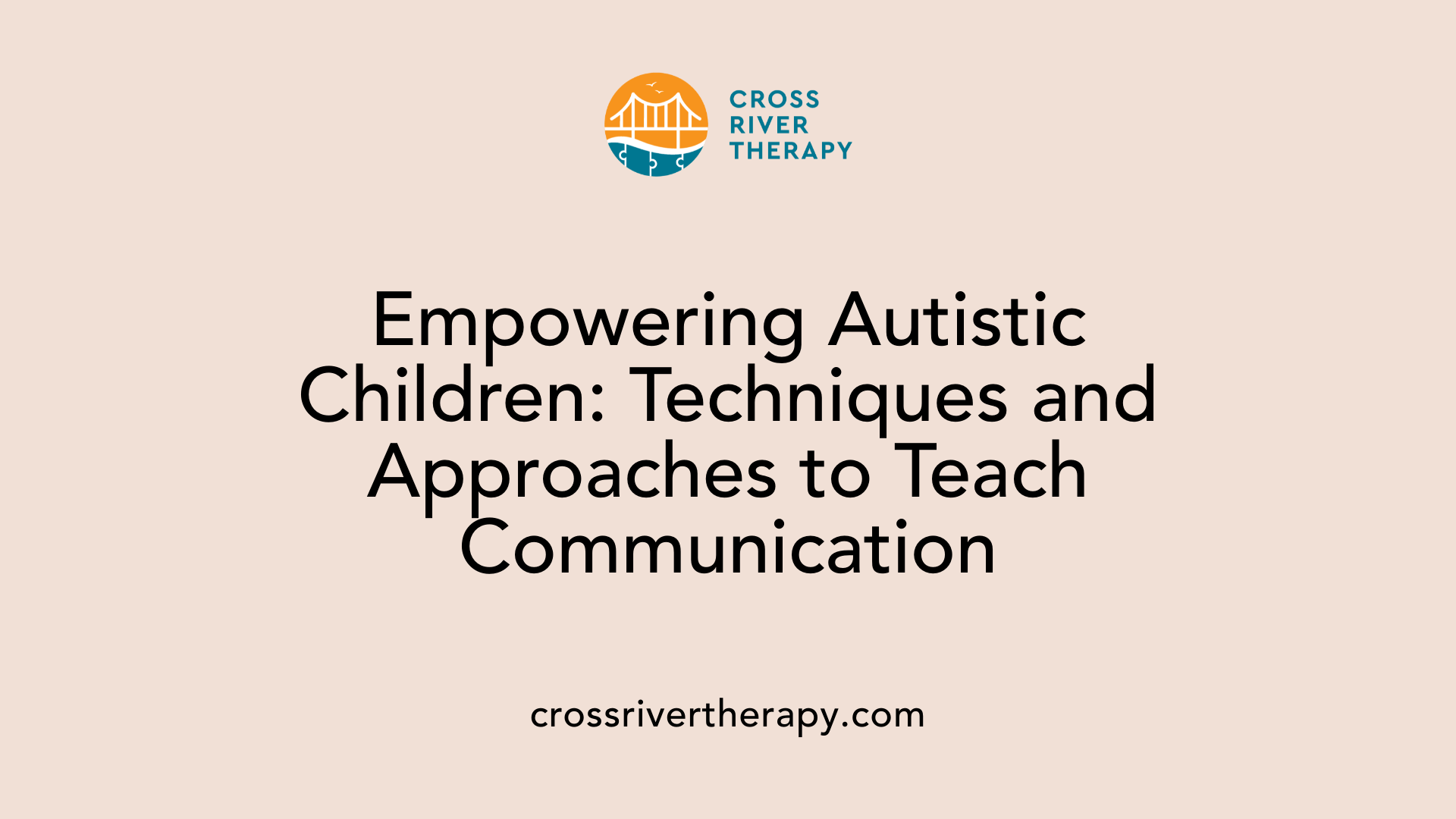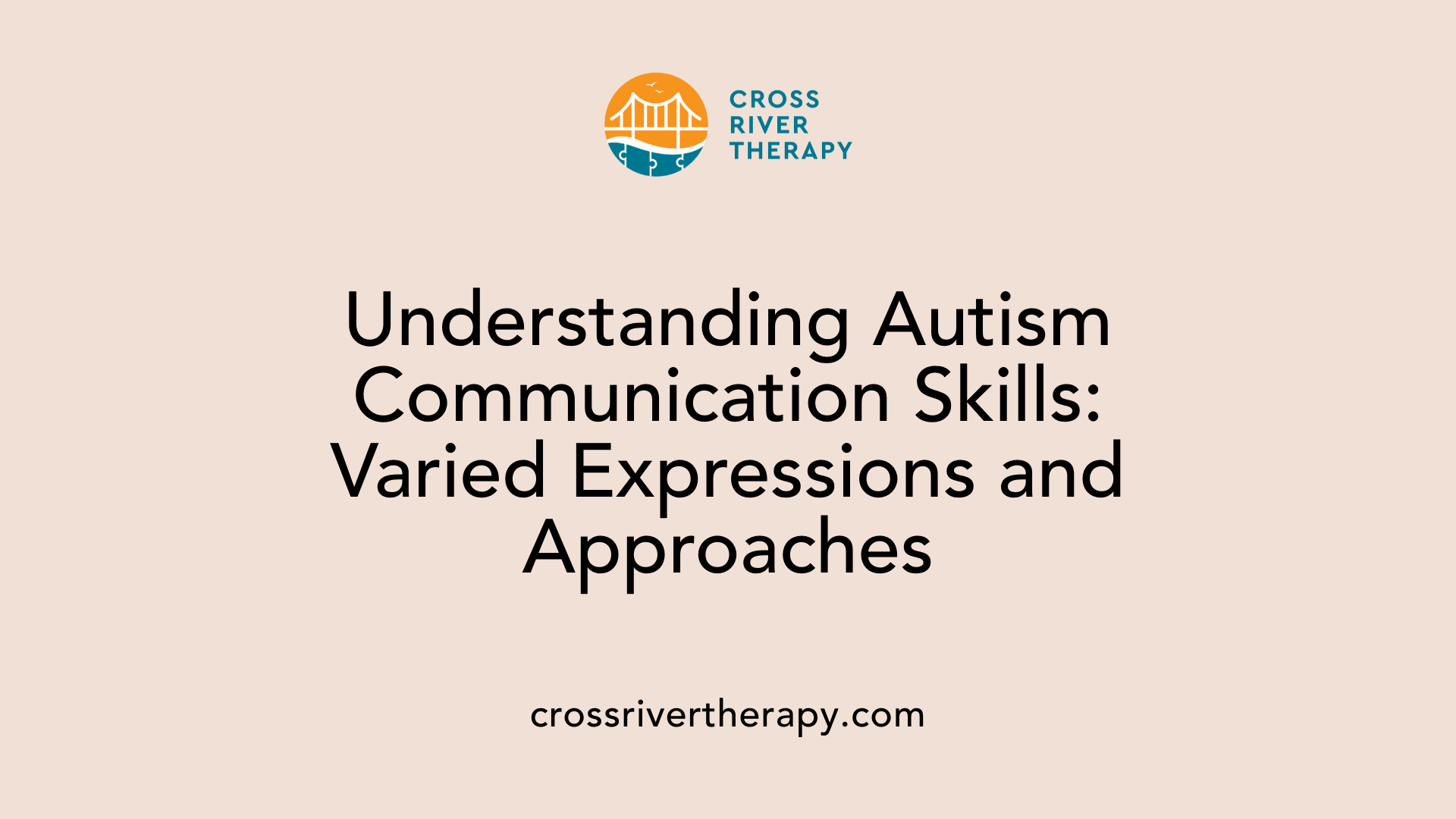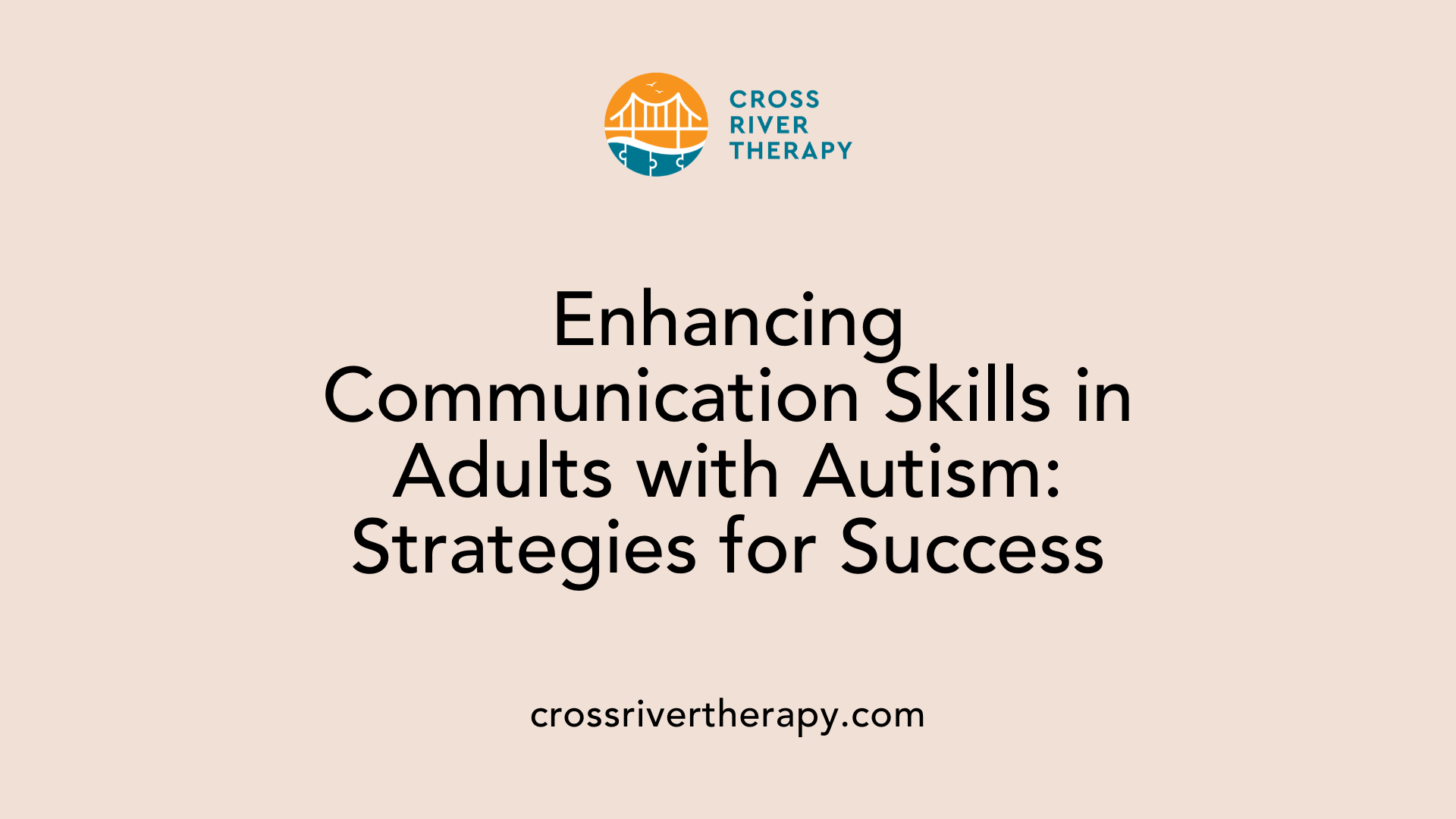Supporting Communication in Autism
Enhancing Interaction and Expression for Individuals with Autism
Understanding Autism and Communication
Communication difficulties are one of the hallmark characteristics of Autism Spectrum Disorder (ASD), encompassing a wide range of challenges and strengths. These can manifest differently across verbal and non-verbal communication, wherein individuals may struggle with eye contact, understand social cues, or use gestures. Recognizing these challenges forms the cornerstone for developing effective communication strategies tailored to each individual's unique needs.
Strategies for Effective Communication with Autistic Individuals

How can I communicate effectively with a person with autism?
To communicate effectively with a person with autism, start by using their name to clearly indicate you are speaking to them. This strategy helps capture their attention right from the beginning and reinforces the connection you are establishing.
Once you have their attention, ensure that communication is slow and deliberate. Many autistic individuals may need additional time to process information, so it is vital to speak clearly, using specific keywords. Avoid long-winded explanations; shorter sentences tend to be more effective.
Questioning techniques
When asking questions, limit yourself to closed or specific questions. For instance, asking "Did you enjoy your lunch?" is preferable to the more ambiguous "How was your day?" This approach reduces the cognitive load and makes it easier for the individual to respond.
Literal language
Furthermore, avoid using irony, sarcasm, or figurative language, as these can be confusing. Clear, literal language helps prevent misunderstandings—always aim for straightforward communication.
Importance of interests
Engaging the individual through topics of their interest can significantly enhance the flow of communication. Whether it's a favorite hobby or a beloved character, connecting on shared interests can foster a more responsive dialogue.
Visual aids
Incorporating visual aids, such as communication boards or picture cards, can be transformative. These supports not only help with expressing needs but also clarify your messages, making comprehension easier.
Non-verbal cues
Be observant of non-verbal cues. Many autistic individuals communicate through gestures or body language. Recognizing these cues can provide insight into their feelings and needs, enabling a richer interaction.
Patience and tailored strategies
Lastly, exercising patience is crucial. Allow time for responses, and be ready to adapt your communication techniques based on the individual's unique needs. Remember that each autistic person may respond differently, so a tailored approach is essential.
Essential Communication Tools for Autism

What communication tools are available for autism?
Communication tools available for autism include a variety of supports designed to enhance interaction and understanding. Here are some essential tools:
| Tool | Description | Key Benefits |
|---|---|---|
| Communication Boards | These boards allow nonverbal children to express themselves by pointing to images. | Facilitates expression without verbal language. |
| Picture Exchange Communication System (PECS) | Uses images to facilitate communication, allowing children to express needs visually. | Proven to improve communication skills. |
| Speech Generating Devices (SGDs) | Devices that produce speech using symbols or keyboards; useful for nonverbal or minimally verbal children. | Enables speech production, enhancing interaction. |
| American Sign Language (ASL) | A visual language that uses signs, widely used within the deaf community. | Offers a structured communication method for some children. |
| Speech Therapy | Targeted interventions to develop language skills and improve communication strategies. | Provides personalized exercises to address specific needs. |
| Social Skills Training | Programs designed to teach appropriate social interactions and behaviors. | Enhances understanding and application of social cues. |
| AAC Systems (Augmentative and Alternative Communication) | Various methods like sign language or electronic devices supporting verbal communication. | Broadens options for expressing thoughts and needs. |
Creating a supportive, communication-friendly environment is equally crucial. Minimizing distractions, offering visual aids, and fostering patience in interactions can greatly enhance a child's ability to communicate. By implementing these tools and strategies, caregivers and educators can significantly improve the communication skills of children with autism.
Teaching Communication to Autistic Children

How can autistic children be taught to communicate?
Teaching communication to autistic children requires a multifaceted approach tailored to their individual needs. Nonverbal and nonspeaking children often benefit from employing sign language, gestures, and visual aids. For example, flashcards can help them express their thoughts and feelings clearly.
Engagement in activities, such as music and art, can significantly enhance their communication skills. These interactive forms of expression foster social interaction and encourage them to share their feelings and ideas with others.
What techniques can aid in emotion expression?
To facilitate better expression of emotions, various techniques can be utilized. One effective method involves using systems like a traffic light model to categorize feelings. Green might signify happy or safe, Yellow could represent feeling nervous or upset, and Red can indicate anger or distress. Such systems simplify emotional complexity, helping children articulate their feelings more readily.
How do structured routines help?
Maintaining predictable and structured routines is essential for autistic children. These routines offer a sense of stability and predictability, which can significantly reduce anxiety. Knowing what to expect allows children to focus more on their communication than on their uncertainties about upcoming activities.
Why is a sensory-friendly environment important?
The creation of sensory-friendly environments cannot be overstated. Children with autism often experience sensory overload, which can hinder their ability to communicate. By fostering a calm and accommodating atmosphere—such as reducing distractions and maintaining a quieter space—children can engage more freely with their peers and caregivers.
In conclusion, through the integration of visual aids, emotional tools, structured routines, and sensory-friendly spaces, autistic children can develop and enhance their communication skills effectively.
Exploring Autism Communication Skills

What are some examples of autism communication skills?
Communication skills in individuals with autism can vary widely, encompassing both verbal and non-verbal forms. Some individuals may exhibit echolalia, where they repeat phrases or sentences, serving different purposes such as initiating interactions or expressing needs. Non-verbal communication methods play a crucial role, particularly for those who struggle with eye contact, gestures, and interpreting social cues.
Visual supports, like communication boards and PECS (Picture Exchange Communication System), are effective tools that enhance expression. These resources enable children to point at images or symbols to convey their needs and preferences. Additionally, augmentative and alternative communication (AAC) methods, such as sign language or speech-generating devices, provide additional avenues for communication for those with limited verbal abilities.
Strategies for clear communication
To promote effective communication, several strategies may be implemented:
- Use simplified language: Short and straightforward sentences help reduce misunderstandings.
- Incorporate visual aids: Visual supports can make abstract concepts more concrete.
- Be direct: Avoid open-ended questions and irony, opting for clear and specific queries instead.
- Establish processing time: Communicating slowly and pausing allows autistic individuals to comprehend and respond adequately.
- Engage using non-verbal cues: Recognizing gestures and behaviors can enrich understanding.
By recognizing these strategies, caregivers and educators can foster a supportive environment that enhances communication for individuals on the autism spectrum.
Improving Communication in Adults with Autism

How can communication skills be improved in adults with autism?
Improving communication skills in adults with autism hinges on a combination of self-reflection and strategic practices tailored to their unique needs. One of the first steps is for individuals to engage in self-reflection, identifying core values and personal communication preferences. This fosters self-awareness, which is crucial for effective advocacy in social and professional contexts.
Using clear and direct language is vital. Autistic adults benefit from communication that is straightforward, avoiding the use of sarcasm or ambiguous phrases. Incorporating visual supports, like diagrams or charts, can significantly aid in enhancing understanding and verbal expression.
Active listening plays a pivotal role in empathetic communication. Practicing this involves fully focusing on the speaker, validating their feelings, and employing specific communication techniques, such as summarizing what has been said to confirm understanding.
Creating a supportive environment is essential to improve communication. Educating peers and family about neurodiverse communication styles promotes acceptance and enhances interactions. By fostering empathy and understanding, these environments encourage autistic adults to engage more openly and confidently in conversations.
Adopting these strategies can lead to meaningful advancements in communication skills, contributing positively to social relationships and professional opportunities.
The Role of Visual Support in Autism Communication
Benefits of Visual Support
Using visual supports in communication for autistic individuals is essential for enhancing understanding and expression. Visual aids help clarify information, reduce anxiety, and create a predictable environment, which can mitigate stress during transitions or new situations.
Types of Visual Aids
There are several visual aids that can be utilized:
- Picture Exchange Communication System (PECS): Allows children to communicate their needs and desires by exchanging pictures.
- Communication Boards: Present images and symbols that users can point to in order to express themselves.
- Flashcards: Help in teaching new words and understanding emotions by associating images with concepts.
Using Visual Schedules
Visual schedules are powerful tools for providing structure. They outline daily routines through images or icons, allowing children to anticipate what comes next. This predictability can alleviate anxiety and foster independence as children learn to navigate their day.
Communication Strategies
Implementing storytelling through visuals helps children understand social situations and expectations. Visual strategies, like modeling correct communication and technology-based aids, can enhance learning and interaction.
Social Stories
Social stories simplify complex social cues into manageable, relatable scenarios, filling in gaps that autistic individuals may find challenging. These narratives can be tailored to specific situations, fostering understanding and equipping children with practical communication skills.
Functional Communication Training (FCT) in Autism
Purpose of FCT
Functional Communication Training (FCT) is a strategic approach designed to help children with Autism Spectrum Disorder (ASD) communicate their needs more effectively. By teaching alternative communication methods, FCT enables children to express themselves in appropriate ways, reducing frustration and misunderstandings.
Replacing Problematic Behaviors
One of the crucial aspects of FCT involves identifying and replacing problematic behaviors, such as tantrums or self-injurious actions, with more functional communication skills. For instance, a child taught to use sign language or picture symbols when they need something is less likely to resort to outbursts when their needs are unmet.
Individual Customization
Each FCT intervention is tailored to meet the individual child's needs, taking into account their unique communication challenges and preferences. Whether through signs, pictures, or verbal cues, the goal is to provide the child the tools they need for effective communication.
Research on FCT Outcomes
Research indicates that FCT leads to significant improvements in communication for children with autism. Early implementation of FCT is shown to result in better long-term outcomes, enhancing the child’s ability to express and meet their needs. As awareness of FCT grows, its integration in therapy settings becomes increasingly valuable, aiding the development of effective communication skills in children with ASD.
Fostering Meaningful Communication
Enhancing communication in individuals with autism is a multifaceted approach that requires patience, understanding, and adaptation. By leveraging both traditional and cutting-edge tools and techniques, caregivers and educators can support the unique communication needs of each individual. With continuous research and awareness, more effective strategies can be developed, fostering environments where autistic individuals feel understood and empowered to express their thoughts and needs. As a community, embracing these strategies helps build a more inclusive society that values diverse communication styles and strengths.
References
- Communication tips - National Autistic Society
- Autism communication strategies that work | The Spectrum
- 7 Autism Behavior and Communication Strategies | NU
- Communication - National Autistic Society
- Autism Communication Strategies: Helping Autistic Children ...
- Autistic children & communication skills | Raising Children Network
- Teaching nonverbal autistic children to talk - Autism Speaks
- Autism communication strategies - LeafWing Center
- Helping Children With Autism Learn to Communicate



